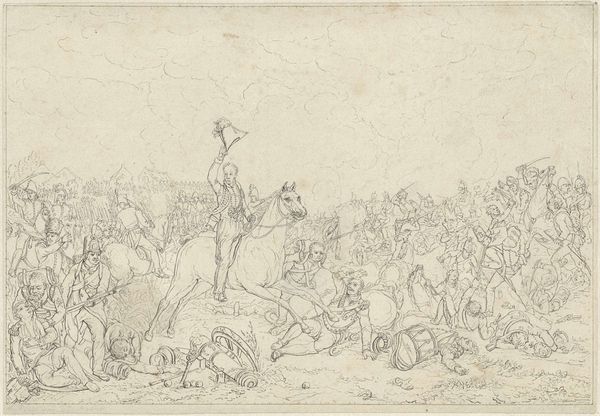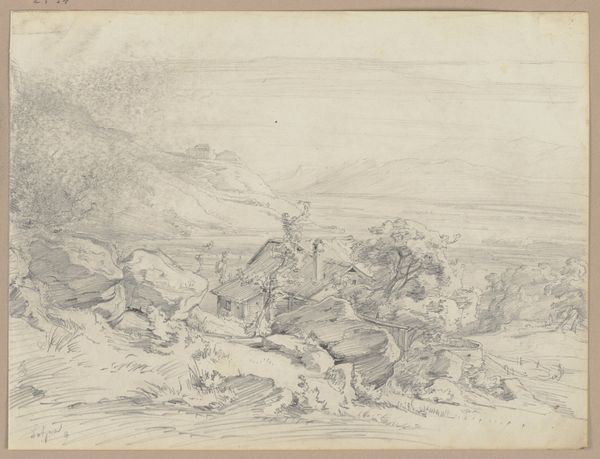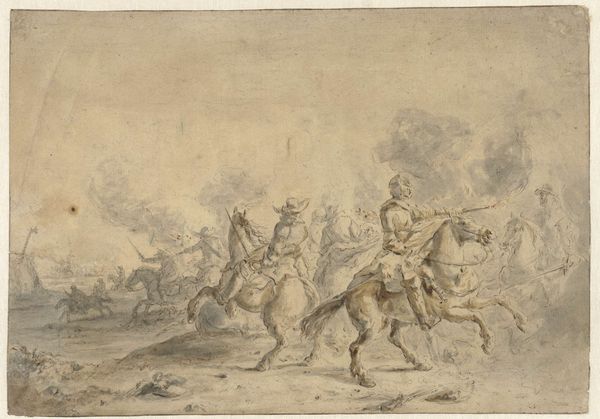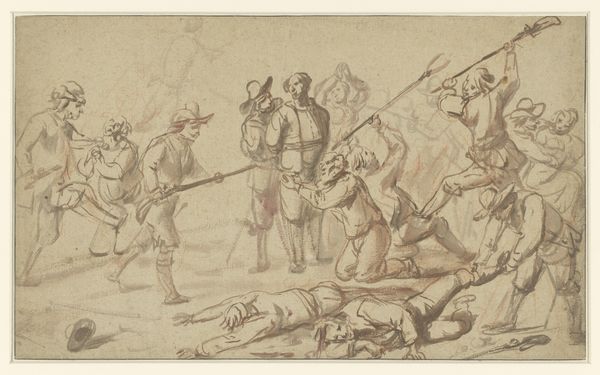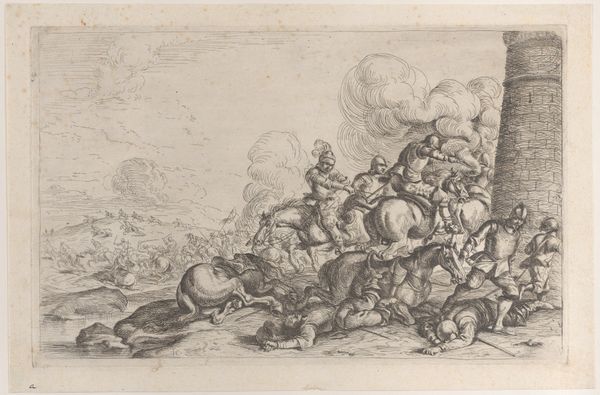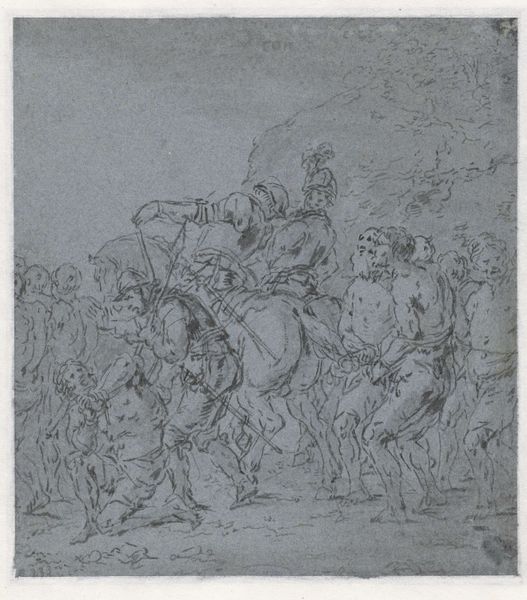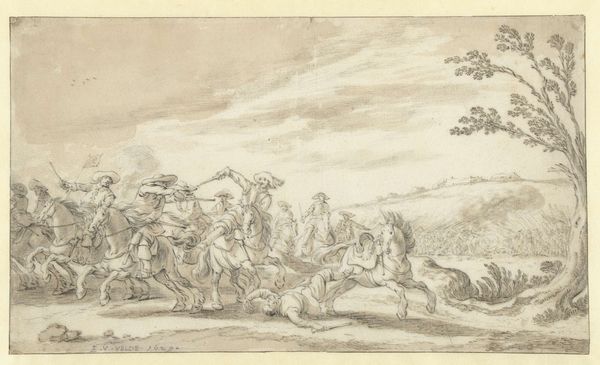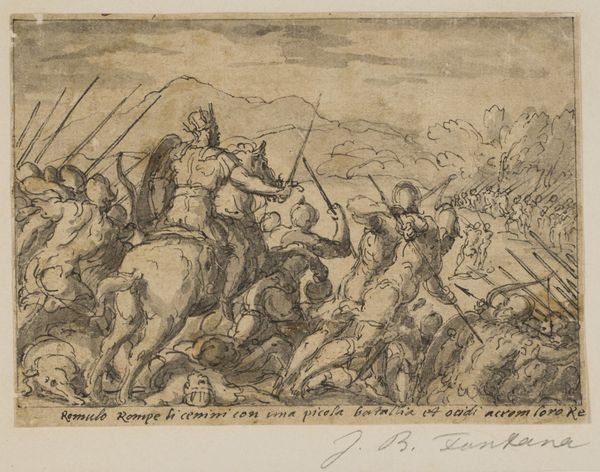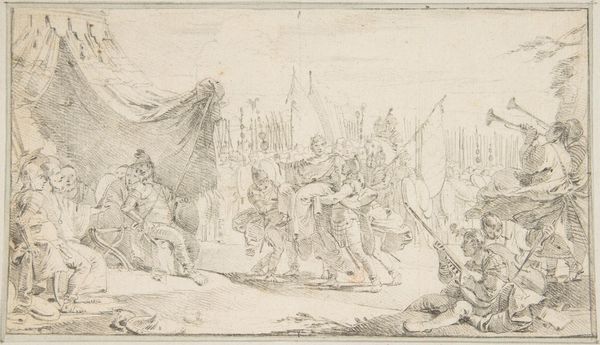
drawing, pencil
#
drawing
#
baroque
#
landscape
#
figuration
#
pencil
#
history-painting
Dimensions: height 221 mm, width 320 mm
Copyright: Rijks Museum: Open Domain
Curator: What an intriguing drawing this is. It is titled "Ruitergevecht," which translates to "Cavalry Fight," created sometime between 1698 and 1752 by Charles Parrocel. It’s currently held at the Rijksmuseum. Editor: My immediate impression is one of intense, chaotic movement, like a snapshot from a larger, grittier scene. The pale pencil marks suggest a preliminary study. Curator: Indeed, Parrocel, a prominent Baroque artist, often sketched battle scenes, revealing much about the military technologies and labor of warfare at the time. What do you make of its depiction of combat? Editor: Well, visually, the recurring motif seems to be fallen figures. Fallen horses, fallen soldiers; it's brutal. The upward thrust of swords and the dynamic postures are clear symbols of aggression and dominance. It clearly aims to tap into that collective memory of battle. Curator: Agreed. Notice the use of pencil as the medium here, which itself speaks to the provisional and functional nature of image making within a battle context. Pencil allowed for rapid documentation on location to relay specific information regarding the terrain and positioning. This tells us so much about 18th century battle tactics. Editor: And I'd add the symbol of the horse itself. Think about its historical association with power, nobility, conquest... Here they are, thrown down into the dirt, subverting that power in moments of extreme vulnerability. Curator: The quick pencil lines may signify the frenzied pace of battle, but more specifically, that material reality represents Parrocel’s attempts to illustrate troop positions to relay material resources available in real-time. The drawing’s incompleteness underscores the precarious and fluctuating reality of combat logistics. Editor: Absolutely, and that resonates across centuries, the fragility of even the most powerful being laid bare on the field of battle. There's an enduring psychological truth captured here. Curator: A true testament to how studies of the medium used can change how we think of the history of war. Editor: Precisely. It takes a simple drawing and unlocks these complex echoes and reminders.
Comments
No comments
Be the first to comment and join the conversation on the ultimate creative platform.
